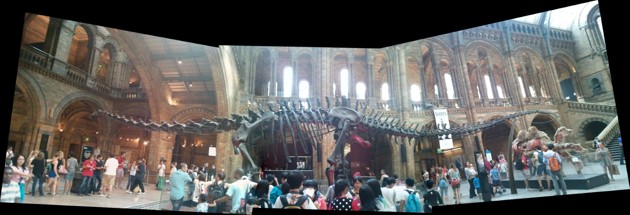
In two earlier dispatches, here and here, I suggested that you give Google Photos a try if you hadn’t done so already. The most obvious payoff is providing an answer to the increasingly pressing question of how to handle increasing zillions of digital images. The less obvious advantage that has grown on me involves the big data/AI aspects of the system — the way it automatically groups photos of one scene into panorama views, or created animated GIFs, or creates albums with titles like “Iron Pigs Game in Allentown” by recognizing the landmarks and activities.
Yes, I know that on the other side of this same technology is the Panopticon Surveillance State. For now I’m talking about the applications that many users will find convenient — and, in particular, where they originated.
A reader who was a long-time official at Microsoft writes in to lament the fact that Google is now being either oohed and aahed at, or viewed with concern, for innovations that Microsoft had been chipping away at for years, especially with a product called Photosynth. I turn it over to the reader:
Once again I shake my head at the ways my ex-employer [Microsoft] would develop a great idea, and then not follow through, partly because of an inability to catch on with the cool crowd.
Photosynth could not just stitch many photos together, it could (given enough pictures) create a 3D model – about 10 years ago. It’s not as passive as Google Photos, as you have to point it at your picture collection, but it would have been relatively easy to make it munch on photos uploaded to OneDrive. The idea has basically just sat as a research project, with the last update 9 months ago, and now Google gets the credit for a great innovation. Apparently people are still using it (who knew?): go to photosynth.net for some recent 3D creations.
I’d never known of this project; I went to the site after getting his note; and he’s right! It looks very interesting. For instance, check this out. Back to the reader:
Apple didn’t invent the smartphone. The “Pocket PC” phone came years earlier. Nest? I remember touring the demonstration e-home when I joined Microsoft in the late 1990s. [JF note: when I was at Microsoft in 1999 I saw it too.]
Now, maybe the company didn’t pursue these projects because they weren’t part of the core mission, and maybe it was because Ballmer was focused on business and not “toys”. That would be fair rationale. But it is, at best, ironic that Microsoft gets the reputation of never innovating anything, and being a ruthless productizing and marketing machine, when almost the opposite is true….
Re your correspondent’s concern about big data and privacy: that cat has been out of the bag for a long time. The “cloud” being able to figure where you were and when dates to when the first geo-encoded picture was uploaded to flickr.
After further comparison of what Microsoft had done and Google is now doing, he wrote once more:
I guess it’s the [Microsoft Live] Photo Gallery feature that’s most like the Google feature. Photosynth is a world beyond both, and has more of the “wow” factor.
The photos [at the beginning and end of this post] come from the London Natural History Museum and the top of the Arc de Triomphe in 2012; I just had to select the pictures in Photo Gallery and click.
What Google seems to bring to the table is (a) identification of a group by place and time (which is trivial), (b) recognition of picture similarity (which is commonplace today) and (c) lots of computers available to make panoramas in the background and probably (d) recognition of a good result. And I guess they trim the result to a rectangle.
The fact you of all people hadn’t heard of Photosynth is exactly my point.
